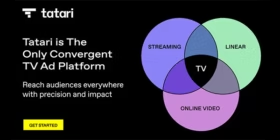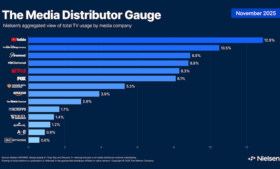
By Allyson Dietz, Senior Director of Product Marketing, TransUnion
 For years, marketers have been sold the dream that first-party data is the key to everything. Own the relationship. Build direct connections. Future-proof your business. As digital privacy concerns mounted and the demise of third-party cookies loomed, the message was clear: collect your own data, and you’ll be safe. But the truth is, first-party data alone only offers the illusion of control.
For years, marketers have been sold the dream that first-party data is the key to everything. Own the relationship. Build direct connections. Future-proof your business. As digital privacy concerns mounted and the demise of third-party cookies loomed, the message was clear: collect your own data, and you’ll be safe. But the truth is, first-party data alone only offers the illusion of control.
As privacy regulations tighten and third-party identifiers disappear, many brands have doubled down on collecting and hoarding their own data—only to realize it’s not enough to scale, personalize or accurately target audiences. Marketing teams are making high-stakes decisions with half the story, missing out on crucial signals about their customers’ behaviors, intent and engagement beyond their own digital walls.
First-Party Data Alone Won’t Save You
Brands that rely solely on first-party data are operating in a self-imposed echo chamber. They’re optimizing campaigns for the same customers over and over again, but what about the ones they haven’t reached yet? What about the behaviors and intent signals happening outside of their owned channels?
This over-reliance on internal data is leading to three major blind spots:
- Shrinking addressable audiences: As walled gardens tighten, visibility into broader behaviors shrinks and retargeting pools get smaller.
- Poor personalization: Without external behavioral insights, personalization efforts become stale, based only on surface-level knowledge.
- Measurement chaos: Traditional attribution models, once fueled by third-party cookies, are breaking down. Without a clear picture of cross-channel activity, marketing ROI becomes harder to prove.
The cracks are already showing—and CMOs are feeling the pressure. In today’s environment, relying only on what you can personally observe or own is no longer a competitive advantage. It’s a liability.
Discovering New Audiences Requires a Multi-Layered Approach
To break free from the walled garden trap, marketers must rethink how they find, engage and measure audiences. First-party data is still a powerful foundation, but it’s just that—a foundation. Without additional layers, the structure is incomplete.
Winning strategies include:
- Expanding beyond owned audiences: First-party data provides insights into existing customers, but it does little to help brands discover future ones. By integrating privacy-conscious third-party data and pursuing second-party partnerships—such as collaborations with adjacent brands—companies can uncover high-value audiences they would never have reached otherwise. For example, a home improvement retailer might partner with a major truck manufacturer to identify DIY-minded consumers and contractors they wouldn’t typically reach through their own CRM or owned channels.
- Leveraging adjacent brand affinity: Consumers’ interests often overlap in surprising ways. Programmatic campaigns that incorporate shared behaviors and related interests can help brands uncover new audience segments that may not be visible through historical purchase data alone. A user browsing outdoor gear today may be your ideal customer for a future travel campaign—but you won’t know unless your targeting strategy looks beyond your immediate ecosystem.
- Building an adaptive identity strategy: Identity resolution is about intelligently connecting multiple data points to create a richer, more actionable understanding of a consumer. Brands that unify their first-party data — like purchase history, website behavior, and CRM profiles — with curated external insights — such as market trends, demographic shifts, and third-party consumer behavior data — can segment audiences more precisely, deliver more meaningful personalization, and allocate spend more efficiently across channels.
Facing the Measurement Challenge
As media consumption habits fragment and paths to conversion grow more complex, the ability to accurately measure impact requires a connected identity strategy. TransUnion’s identity graph enables brands to stitch together ad exposures across walled gardens, owned properties, and emerging platforms like CTV—offering a clearer view of the full customer journey. This foundation powers identity-enabled measurement capabilities that help marketers understand which touchpoints drive real impact and how to reallocate spend more effectively.
Leading marketers are solving this by embracing privacy-first measurement approaches. By unifying first-party and third-party signals through a connected identity graph, brands can consistently link ad exposures across devices and platforms—even when deterministic identifiers like cookies are no longer available. This stitched identity foundation enables attribution and incrementality testing, giving marketers the clarity they need to optimize performance and prove impact with confidence.
The Future of Data-Driven Marketing
Marketers who cling to a first-party-only strategy risk losing relevance—and revenue—in an increasingly competitive digital world. Consumers expect personalized, relevant experiences, and they engage across a fragmented web of platforms, apps, and devices. Brands that limit themselves to their own siloed view of the customer will inevitably fall behind.
The brands that will win in 2025 and beyond are those that embrace connected identity, blending multiple sources of data to achieve a full, privacy-first view of their audiences. They’ll be better equipped to:
- Find new customers at scale
- Personalize experiences beyond basic CRM data
- Measure and optimize performance in a privacy-safe way
- Future-proof their marketing strategies against continued platform and regulatory changes
The industry has spent years telling CMOs that first-party data is their golden ticket. But the real question isn’t how much data you own—it’s how well you use it.
Succeeding in the next era of marketing will require a shift in mindset: from data ownership to data collaboration, from isolated silos to connected ecosystems, and from reactive collection to proactive audience discovery.
It’s time to move beyond the illusion. First-party data is the starting point—not the endgame.







